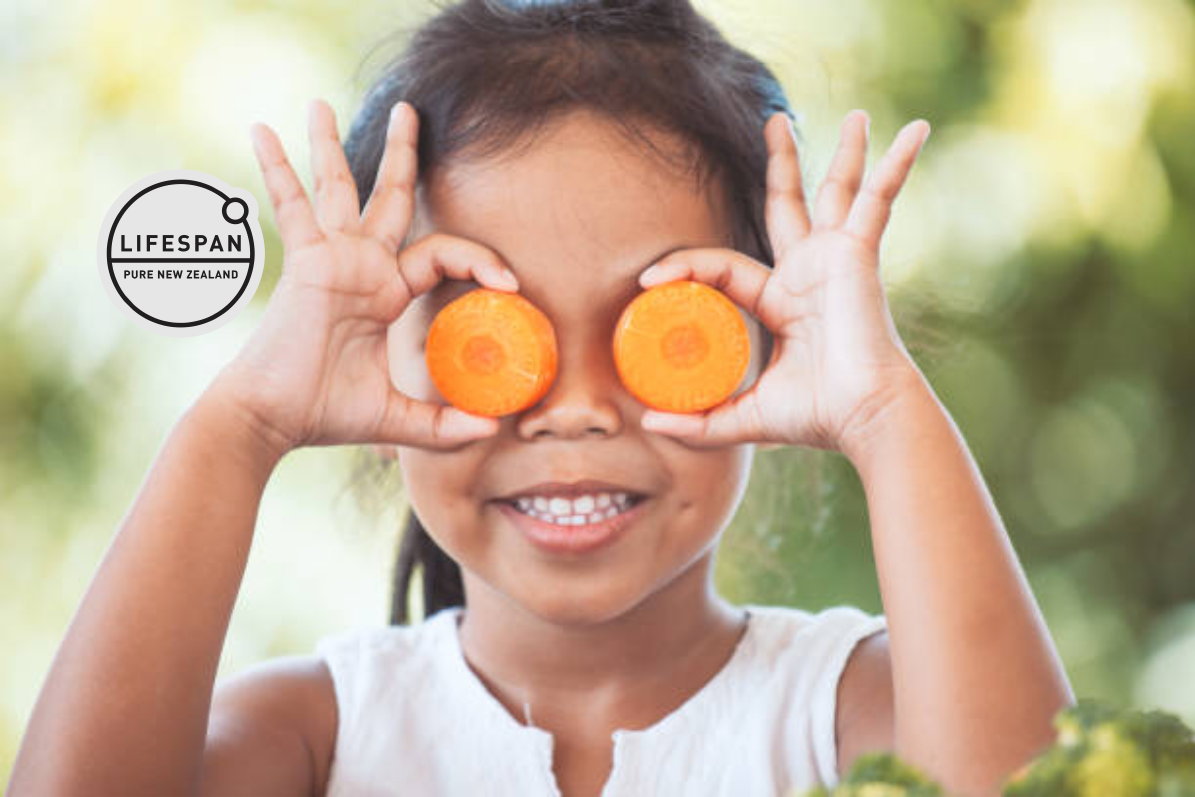
Natural eye health chews
Why Choose Bilberry?
Derived from high-quality European bilberry extract, this supplement is an excellent choice to support children's eye health.
Bilberries are known for their potential benefits in eye health, making them a natural ally against the visual demands of the digital age.
Recent posts
-

-
 The Impact of Screen Time on Children's EyesightBy Ben Winters
The Impact of Screen Time on Children's EyesightBy Ben Winters

About the Author
Ben Winters is a passionate advocate for natural health and wellness. With years of experience in the field of nutritional supplements, Ben has dedicated his career to developing products that not only address specific health concerns but also promote overall well-being. His expertise in utilising of natural ingredients, like the European bilberry, has led to the development of this exceptional eye health supplement.

Healthy Eyes for Children: Fun Activity Guide
By Ben Winters
Children's eyesight is a precious and vital aspect of their overall development, particularly in a world where screens are an integral part of daily life.
Digital devices are a staple in our daily lives, which may be impacting on the health of our children's eyes, and having a negative effect on their eyesight. While technology offers incredible learning opportunities, it is important to balance the time our kids spend in front of screens, with activities that promote eye health.
Excessive screen exposure can affect your child's eyes, so it is important that your children also take part in other enjoyable, screen-free activities.
It is essential to find a balance between the convenience and benefits of digital devices, and the need to protect and nurture our children's visual health.by offering enriching experiences away from screens.
Outdoor activities offer immense benefits for children's eye health, going beyond just a break from screens.
When children engage in outdoor play, they are exposed to natural daylight, which is necessary for the overall health of their eyes. Sunlight provides essential natural light, which has been found to play a significant role in reducing the risk of myopia (nearsightedness). This is especially important in a time where myopia is becoming increasingly common due to increased indoor activities and screen time.
Additionally, outdoor activities encourage children to focus on objects at varying distances, a visual exercise that is often lacking in indoor environments where distances are limited. This practice of looking at distant objects allows the eye muscles to relax and reduces the risk of eye strain, a common problem associated with prolonged screen use.
Furthermore, engaging in outdoor activities can enhance children's visual development in ways that indoor activities cannot. For instance, playing sports or exploring nature requires children to track moving objects, improving their dynamic visual acuity and hand-eye coordination. These activities also develop their peripheral vision, an aspect that is often under-stimulated by stationary screens.
The varied and unpredictable visual experiences provided by the outdoors, such as navigating through different terrains, estimating distances, and adapting to varying levels of natural light, offer rich stimuli for developing eyes. Such visual challenges promote healthy eye development, enhancing visual skills that are crucial not just for academic success but for overall life skills.
Outdoor activities not only provide a necessary respite from screens but are instrumental in fostering robust visual development in children.
For younger children, simple and imaginative outdoor activities can be both enjoyable and beneficial for their development.
A backyard or local park can be transformed into a wonderland of exploration with activities like a nature scavenger hunt. Equip them with a list of natural items to find, like a certain shaped leaf, a smooth rock, or a feather, and watch as they excitedly explore their surroundings. This not only keeps them active but also nurtures their observational skills and appreciation for nature.
Another great activity is a mini obstacle course, which can be set up with everyday items like ropes, hula hoops, and small cones. This encourages physical activity, improves their coordination, and provides a fun way to develop their spatial awareness and balance.
For older children, outdoor activities can be more structured yet equally engaging. Geocaching, a real-world outdoor treasure hunting game using GPS-enabled devices, can be a thrilling adventure for them. It combines technology with physical activity and is an excellent way for kids to learn about navigation and geography while getting some fresh air and exercise.
Alternatively, simple sports like frisbee, soccer, or basketball can be both fun and beneficial. These sports are not only good for physical health but also improve visual tracking and hand-eye coordination.
Organising a bike ride through a scenic route or a family hike on a nature trail can also be a great way to spend quality time together while encouraging a love for outdoor activities and an appreciation for the environment.
These activities provide older children with a sense of adventure and independence, all while contributing positively to their physical and visual development.
Indoor activities, while seeming to be more limited in scope compared to outdoor adventures, can be just as enriching and beneficial for children's development, particularly in enhancing their visual and cognitive skills.
For younger children, imaginative play is a cornerstone of development that can be easily encouraged indoors. Setting up a pretend play area, like a mini-kitchen, a dollhouse, or a makeshift marketplace, can stimulate their creativity and visual-spatial skills. These activities not only foster role-playing and storytelling skills but also help in developing hand-eye coordination as children manipulate various objects.
Arts and crafts are another excellent indoor activity. Simple tasks like drawing, colouring, cutting out shapes, and even basic origami challenge their fine motor skills and encourage precision and attention to detail, essential for healthy visual development.
For older children, indoor activities can take a more structured and intellectually stimulating form. Building model kits, whether they're of cars, aeroplanes, or architectural structures, can be a fantastic way to engage their attention while enhancing visual-spatial understanding and fine motor skills.
Engaging in board games and puzzles is another effective way to stimulate cognitive abilities. Strategy games like chess or more complex puzzle games challenge their problem-solving skills and improve concentration. These games also require players to visualise movements and consequences, thereby enhancing their predictive and strategic thinking.
Another beneficial activity is reading and creative writing, which not only improves language skills but also nurtures imagination and visualisation capabilities. Encouraging a love for reading not only provides educational benefits but also develops the ability to create and visualise stories and scenarios, further enhancing visual cognitive skills.
These indoor activities, while entertaining, play a crucial role in developing a range of skills, from motor to cognitive, proving that time spent inside can be both enjoyable and developmentally beneficial for children of all ages.
Incorporating supplements in the form of chews, such as the Wise Owl Bilberry + Lutein Chews, can be a beneficial addition to a child's diet, particularly in supporting their eye health.
These chews are designed to support children's eyesight and immune systems, offering a blend of vitamins and micronutrients derived from bilberries, known for their eye health benefits.
The key ingredients include bilberry extract, lutein and zeaxanthin. These components are specifically chosen for their benefits to eye health, with lutein and zeaxanthin being well-known for their role in supporting vision and eye health.
Fostering healthy eyesight in children is a multifaceted approach that involves both active engagement in a variety of physical activities and mindful nutritional support.
Outdoor and indoor activities are important for developing children’s visual and cognitive skills, and incorporating eye health supplements can provide additional support.
Healthy vision is essential for a child's physical, educational, and social development. It impacts their ability to learn and engage with the world around them, with studies showing that a significant portion of learning is visual.
Maintaining good eye health through protective measures, such as indoor and outdoor non-screen activities, and balanced nutrition, supports their academic performance, sports activities, and general quality of life.
This lays the foundation for healthy visual habits that will benefit them throughout their lives.


